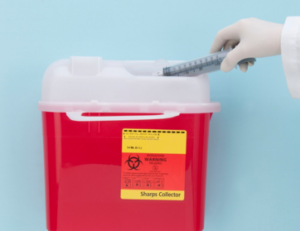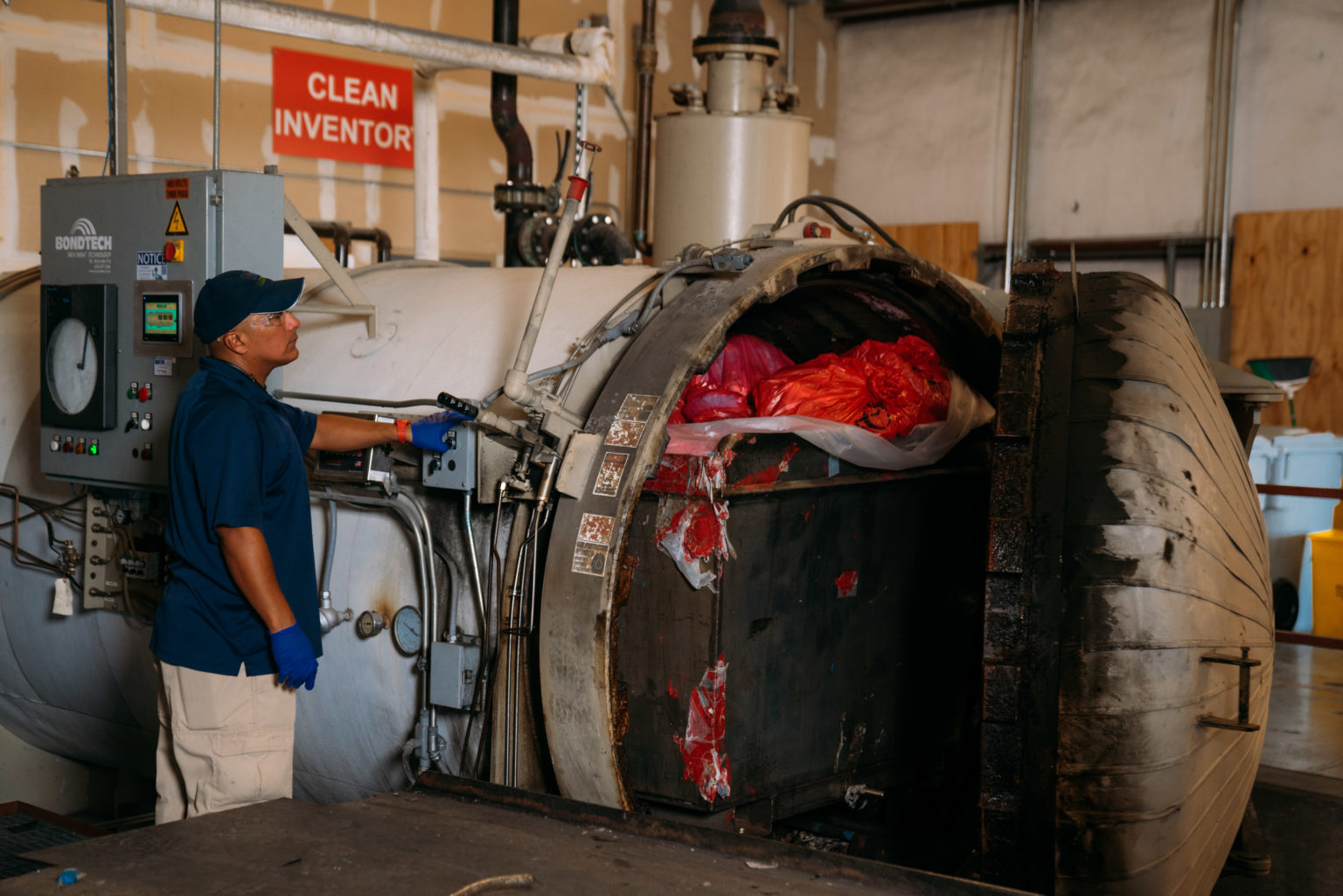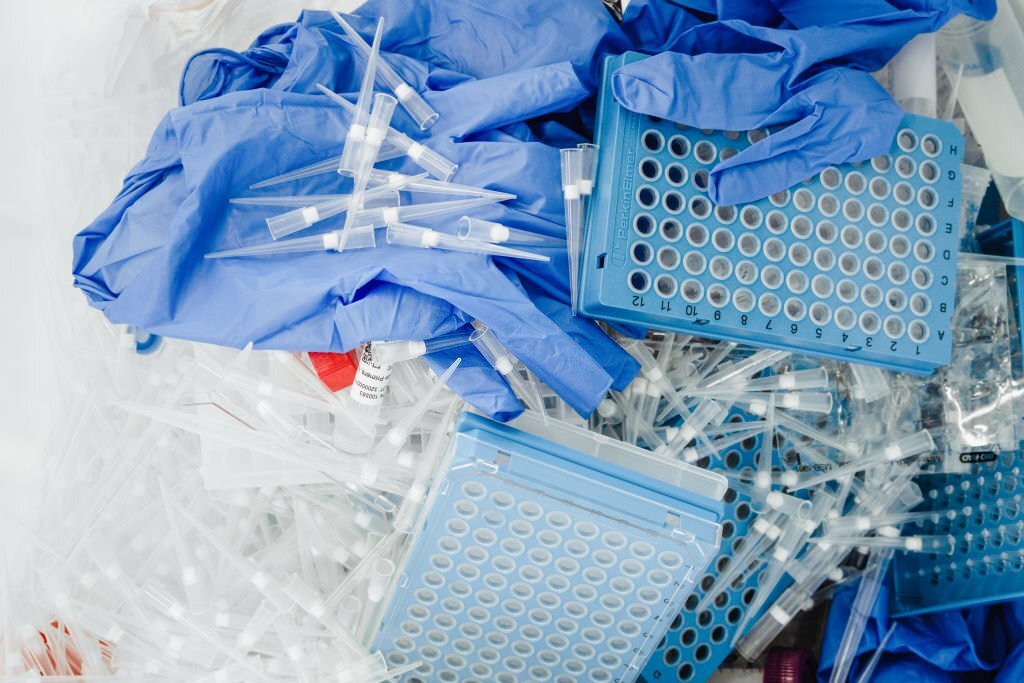Various activities carried out in the laboratory, such as research, quality testing, and sample analysis can produce various kinds of waste, both chemical, biological, radioactive waste, and even a mixture of these various types of waste. Without proper handling, this waste can endanger laboratory workers, the surrounding community, and can cause environmental pollution. However, there are no regulations in Indonesia that specifically address laboratory waste treatment. For this reason, waste handling in laboratories can refer to regulations regarding the handling of hazardous waste, such as Peraturan Menteri Lingkungan Hidup dan Kehutanan Republik Indonesia Nomor 6 Tahun 2021 tentang Tata Cara dan Persyaratan Pengelolaan Limbah Bahan Berbahaya dan Beracun, Peraturan Menteri Lingkungan Hidup Republik Indonesia Nomor 14 Tahun 2013 tentang Simbol Bahan Berbahaya dan Beracun, dan Peraturan Menteri Kesehatan Republik Indonesia Nomor 7 Tahun 2019 tentang Kesehatan Lingkungan Rumah Sakit.

Container for sharp waste (Source: https://www.fda.gov/)
The first step that needs to be taken in handling laboratory waste is to separate the waste based on its characteristics. The waste is placed in containers of different colors based on the type of waste. According to Peraturan Menteri Kesehatan Republik Indonesia Nomor 7 Tahun 2019 tentang Kesehatan Lingkungan Rumah Sakit, red containers are intended for radioactive waste, yellow containers for infectious and pathological waste, purple containers for cytotoxic w/aste, and brown containers for expired chemical waste, chemical spills, chemical packaging waste, and pharmaceutical waste. In addition to the color of the container, the shape and material of the laboratory waste container also need to be adjusted to the nature of the waste. For example, liquid waste must be placed in a tightly closed and leak-proof container, and sharp objects must be placed in a waterproof and thick container to prevent them from penetrating the walls of the container. It should also be noted that sharp waste storage containers should not be overly full. If waste has already filled 75% of the container, the container must be immediately closed. This applies to other types of waste as well. Waste should only be filled up to ¾ of the storage container’s capacity.
After separating the waste, each container must be labeled with information about the type, packaging date, and nature of the waste. The labeling of B3 waste containers is regulated in Peraturan Menteri Lingkungan Hidup Republik Indonesia Nomor 14 Tahun 2013 tentang Simbol Bahan Berbahaya dan Beracun.

Hazardous waste labels (Source: https://www.universaleco.id/ dan https://www.its.ac.id/)
The next step in laboratory waste management is to process the separated waste. Some types of waste need to undergo decontamination before being released into the environment. The decontamination process for laboratory waste can be done on-site or off-site at a waste treatment facility. For liquid waste, on-site decontamination can be done by disposing of the waste directly into the sewer (only for non-hazardous specimens), chemical disinfection, or autoclaving. The process of disinfecting liquid waste with chemicals generally uses sodium hypochlorite or phenol. Before carrying out chemical disinfection, the most important thing to consider is the chemicals contained in the liquid waste. This is necessary to prevent harmful effects due to the mixing of chemicals, such as the mixture of formaldehyde and sodium hypochlorite, which can produce hazardous gases such as hydrochloric acid, chlorine, and formic acid. In addition, a mixture of ethanol and sodium hypochlorite can also produce chloroform. Not only chemical disinfection, but sterilization of liquid waste can also be done by the autoclave method. The advantage of this method is that it is free from chemical disinfectants and their by-products, so it does not pollute the environment. During the autoclave process, the liquid waste storage container is left open so that the entire liquid waste is exposed to autoclave steam.

Waste autoclaving process (Source: https://medsharps.com)
For solid waste decontamination, the most commonly used methods are autoclaving and incineration. Disinfection using chemical agents for solid waste is considered less effective. This is because it is difficult to ensure that the entire surface of the solid waste is exposed to the chemical disinfectant. Decontamination of solid waste using the autoclave method is useful for eliminating biological agents present in solid waste. The temperature used in the autoclave process is 121°C. All parts of the solid waste must be exposed to steam from the autoclave process, so the solid waste must be placed in a container that allows for good steam penetration. Generally, decontamination using autoclave is used for materials contaminated with microorganisms, including body fluids and blood.
Another method that can be used to decontaminate solid waste is incineration. Incineration is useful for eliminating biological agents present in solid waste, including prions and spores. Not all types of solid waste can undergo incineration processes, so it is necessary to ensure the solid waste material before the incineration process. Plastic waste can cause excessive heat in the incinerator if it exceeds the limit. Soda-lime glass is also a material that should not undergo incineration processes because it melts at a temperature of 550°C and can create a layer inside the incinerator that can reduce its lifespan. Sharp object waste can be decontaminated using the autoclave method and then burned using an incinerator. Animal carcass waste can also be processed in the same way, namely through autoclaving and then burning using an incinerator. Before being processed and disposed of, animal carcass waste can be frozen to prevent decomposition.”
In addition to on-site processing, laboratory waste can also be sent to a waste treatment facility for off-site processing. Some things to consider when processing laboratory waste off-site are the safety of the containers to prevent waste leakage during transportation, labeling that contains data on the waste, and proper transport of the waste to the waste treatment facility.
Sources:
Peraturan Menteri Kesehatan Republik Indonesia Nomor 7 Tahun 2019 tentang Kesehatan Lingkungan Rumah Sakit.
Peraturan Menteri Lingkungan Hidup Republik Indonesia Nomor 14 Tahun 2013 tentang Simbol Bahan Berbahaya dan Beracun.
World Health Organization. (2020) Decontamination and Waste Management. 4th edn. Geneva: World Health Organization. Available at: https://apps.who.int/iris/handle/10665/337958 (Accessed: April 11, 2023).


Leave a Reply